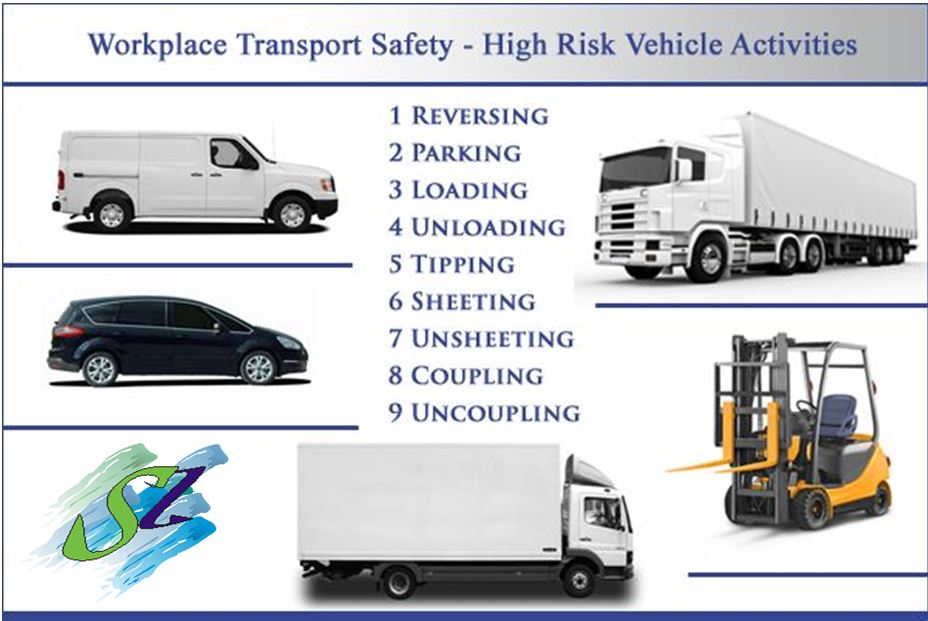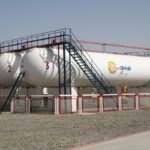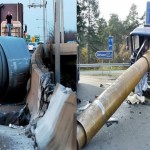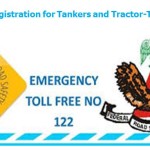
Safe Vehicle
Vehicles used in the workplace should be suitable for the purpose for which they are used.
You should carefully consider the working environment in which a specific vehicle will be used and the suitability of that vehicle for the people using it. Consulting with those who will use it is a key part of developing a vehicle specification.
Most vehicles used in the workplace should meet this standard, but in some cases there are specific supply standards for mobile plant (e.g. some lift trucks).
Warning devices such as rotating beacons and reversing alarms are often fitted, and conspicuous painting and marking can be used to make a vehicle stand out to pedestrians.
Drivers should be able to see clearly around their vehicle, so consider measures such as CCTV and special mirrors where visibility is restricted.
Vehicles should be designed so that, wherever possible, those who use them can do their work from the ground. Where people have to work at height on vehicles, suitable means of safe access onto and around vehicles should be provided.
Maintenance
Vehicles should be maintained in good working order so they remain mechanically sound, and any devices, such as flashing beacons, function properly. Vehicles such as lift trucks and those with tail lifts must be thoroughly examined by a competent person and reports kept.
Planned inspections are a vital part of Preventative Maintenance. These may include daily safety checks carried out by drivers and regular maintenance inspections based on time or mileage.
Drivers should be provided with a list of the daily checks to be signed off at the start of each shift. This should be monitored to ensure the checks are carried out properly.
Safe Driver
Drivers should be competent to operate a vehicle safely and receive appropriate information, instruction and training for the vehicle they use. It is particularly important that younger or less experienced drivers are closely monitored following their training to ensure they work safely.
Competence
Consider the following:
For new recruits: Recruitment and placement procedures should be in place to ensure all new drivers are competent.
For existing employees: Make sure they have, and continue to have, the skills and experience needed to operate a vehicle safely. If the work changes, drivers should receive the necessary training to carry out the modified task safely.
Training
Training requirements will depend on an individual’s experience and the training they have previously received. Your risk assessment should help decide the level and amount of training a person requires.
In general, newly recruited drivers have the greatest training needs but there should also be a programme of reassessment for more experienced drivers.
It is important to assess the information provided by newly appointed drivers, particularly in relation to their training and experience. They should also be monitored on-site, to establish both their actual level of competence and any further training needs.
Regular and repeated training is also very important to keep the drivers adequately and consistently informed. The pressures of work and the extremely loaded work routine of drivers may affect the quality of retention hence the need for regular and refresher training.
You should keep a training record for each driver. This will help to ensure the most appropriate person is allocated a particular task and identify those requiring refresher training.
Fitness to operate
A person’s fitness to drive/operate a vehicle should be judged on an individual basis but the aim is to match the requirements of the task with the fitness and abilities of the driver/operator.
Other areas to consider
In addition to the three key areas of site, vehicle and driver, the following areas should also be taken into consideration when managing workplace transport safety.
Consultation with employees
You are legally required to consult all your employees, in good time, on health and safety matters. In workplaces where a trade union is recognised, this will be through union health and safety representatives. In non-unionised workplaces, you can consult either directly or through other elected representatives.
Consultation involves employers not only giving information to employees but also listening to them and taking account of what they say before making health and safety decisions.
Issues you should consult employees on could include:
- Health and safety and the work they do
- How risks are controlled
- The best ways of providing information and training
Shared Premises
Employers, employees and the self-employed who share a workplace should co-operate and communicate with each other on the site.
Site operators should take responsibility for coordinating any health and safety measures and ensuring everyone on-site understands their health and safety responsibilities and the site rules.
Vehicles on which employees of more than one company are at work are considered to be shared workplaces, for example where supermarket employees are loading a trailer owned by a distribution company.
Whenever this occurs, those involved should be fully aware of their roles and responsibilities before any activity is undertaken. Clear, written instruction and information should be available to those involved.
If you do not own the site you should liaise with your landlord as you both have legal responsibilities to ensure the site is safe.
The public
The public often have access to workplaces where vehicles operate. As they will generally be unfamiliar with the workplace, they should be kept away from any work activities wherever possible.
Where this is not possible, you should put in place suitable traffic management arrangements to:
– Control pedestrian access
– Separate people from vehicles
– Control vehicle movements
– Monitor activities on-site
Contractors
Employers and the contractors they use have duties under health and safety law. When using contractors (e.g. visiting drivers and agency staff), you should:
– Take into account their skills, knowledge and experience
– Provide them with relevant information, such as vehicle and pedestrian traffic routes, speed limits, designated loading, unloading and parking areas and site rules. Make sure you consider foreign drivers, e.g. provide information in other languages
– Liaise with them to consider the risks from each other’s work activities and agree how the work will be undertaken
– Monitor them to ensure they work safely and comply with the site rules
– Set up any arrangements for co-operation and co-ordination
– Ensure action is taken when they operate in an unsafe manner






